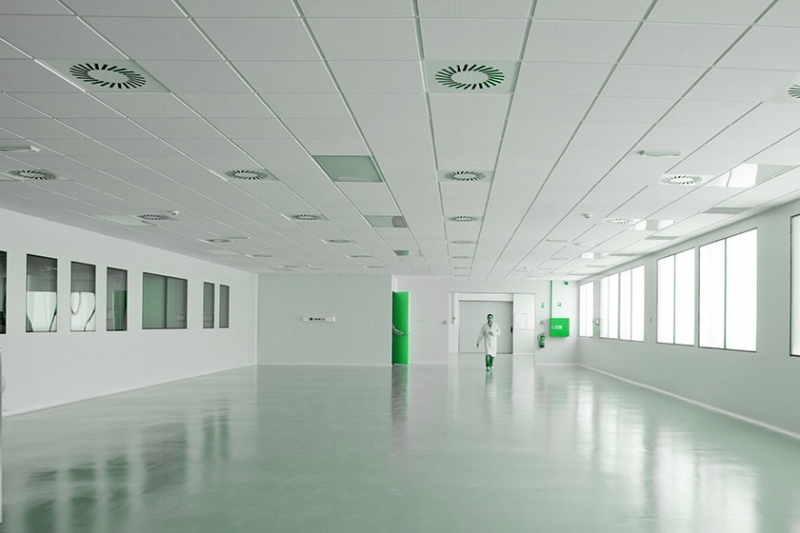Preventing the formation of dust particles from surface coatings is also essential, especially in electronics manufacturing. Not only must a finish protect against wear and impact damage, it must also contribute to the room`s cleanliness. Finished surfaces must be easy to keep clean and impervious to attack by chemicals that could cause minute particles to be released into the atmosphere.
Chemical resistance and containment are major concerns where chemicals and solvents are used and stored. Most states now require some type of secondary containment system to keep spilled chemicals under control to prevent them from contaminating soils both under and around the site. For example, the State of Wisconsin Department of Natural Resources requires that concrete surfaces be covered by an impermeable liner to contain spills and protect surfaces from the effects of spilled corrosive fluids.
To protect the substrate against chemical corrosion, the covering must resist whatever chemicals might be spilled. Therefore, it must be able to withstand any acid, base, or solvent at that location. Because this varies greatly from industry to industry and from plant to plant, any material selected for containment against chemicals should be rigorously tested on-site.
Slip resistance is a requirement in many manufacturing operations, especially where floors are frequently wet. According to the National Safety Council, more than 500,000 injuries occur each year at the workplace due to falls on slippery floors. Many types of anti-slip flooring have been developed for industrial applications, but most of these are unsuitable for cleanrooms. Typically, sand and some other gritty material are embedded in a floor to produce a rough, slip-resistant surface. While this finish provides excellent traction, it can make floors difficult to clean because of surface peaks and ridges, which offer sites for contamination. Therefore, safety floors of this type are not acceptable for cleanrooms.
Electrical properties of cleanroom flooring depend on production requirements and can vary from highly conductive to very resistive, with just enough conductivity to dissipate electrostatic discharges.
Some estimates indicate that 25 percent of latent failures to electronic devices are ESD-related, therefore, controlling static is extremely important.
Resistance below 105 Ohms is considered conductive, but we were concerned about too much conductivity. We wanted something that offered a little more resistance in case there was a voltage that could short out through the ground. A highly conductive floor doesn`t provide the same degree of safety as one with a resistance of between 105 and 109 Ohms, which is a true `static dissipative` floor.
On the other hand, some facilities require extraordinary precautions to eliminate any possibility of a spark-caused explosion.











